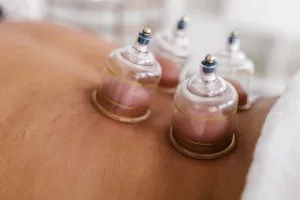Vitiligo is a skin condition characterized by the loss of pigmentation, resulting in patches of lighter skin. This occurs when melanocytes, the cells responsible for producing melanin (the pigment that gives skin its color), are destroyed or stop functioning properly. Vitiligo can affect any part of the body, including the face, hands, arms, and feet, as well as areas like the mouth, eyes, and scalp. While the exact cause of vitiligo is unknown, it is thought to be an autoimmune disorder, in which the immune system mistakenly attacks healthy cells. Factors such as genetics, stress, and environmental triggers may also play a role.
There is no cure for vitiligo, but several natural remedies can help manage symptoms, stimulate pigmentation, and improve skin health. These remedies aim to restore melanin production, reduce inflammation, and boost overall immune function, offering a holistic approach to managing the condition.
In this article, we’ll explore 11 natural remedies that may help in managing vitiligo and promoting skin health.
1. Ginkgo Biloba
Ginkgo biloba is an ancient medicinal herb that has been used for centuries to improve circulation and boost cognitive function. Recent studies suggest that it may also be effective in treating vitiligo due to its antioxidant and immunomodulatory properties. Ginkgo biloba is believed to help slow the progression of vitiligo and even promote repigmentation in some cases by protecting melanocytes from oxidative stress and modulating the immune response.
Ginkgo biloba can be taken in supplement form or as a herbal tea. While it may not work for everyone, some individuals with vitiligo have experienced significant improvements in pigmentation after using ginkgo biloba regularly.
2. Turmeric and Mustard Oil
Turmeric, a powerful anti-inflammatory and antioxidant herb, has been used in traditional medicine for treating various skin disorders. When combined with mustard oil, turmeric may help stimulate pigmentation in areas affected by vitiligo. Mustard oil is known for its ability to improve blood circulation and promote melanin production in the skin.
To use this remedy, mix 5 teaspoons of turmeric powder with 250 milliliters of mustard oil to form a paste. Apply this mixture to the affected areas twice daily for several months. Consistent use of this remedy may help restore pigmentation over time.
3. Aloe Vera
Aloe vera is widely known for its skin-healing properties, particularly in treating burns, cuts, and other skin conditions. Aloe vera is rich in antioxidants and enzymes that can help soothe the skin, reduce inflammation, and promote the regeneration of skin cells. While aloe vera cannot cure vitiligo, it can help nourish the skin and protect it from further damage.
Applying fresh aloe vera gel directly to the affected areas can provide soothing relief and help improve the overall health of the skin. Regular use may enhance the skin’s ability to produce melanin and reduce the appearance of vitiligo patches.
4. Psoralea Corylifolia (Babchi)
Psoralea corylifolia, commonly known as babchi, is an herb used in Ayurvedic and Traditional Chinese Medicine for treating skin disorders, including vitiligo. Babchi contains psoralen, a compound that makes the skin more sensitive to sunlight, thus stimulating melanin production when exposed to ultraviolet (UV) rays.
Babchi oil or seeds can be applied topically to the skin, but it’s important to use it cautiously as it can cause skin irritation in some individuals. Combining babchi oil with carrier oils like coconut or almond oil can help reduce the risk of irritation. Sun exposure should be done under careful supervision to avoid burns, and it’s advisable to consult a healthcare professional before starting any psoralen-based treatment.
5. Black Seed Oil (Nigella Sativa)
Black seed oil, derived from the seeds of Nigella sativa, has been used in traditional medicine for its numerous health benefits, including its ability to boost the immune system and fight inflammation. Black seed oil is also rich in antioxidants that protect the skin from oxidative stress, which is believed to play a role in the development of vitiligo.
Studies suggest that black seed oil may help slow the spread of vitiligo and promote repigmentation when applied topically to the affected areas. To use, apply black seed oil directly to the patches of depigmented skin twice daily. Some individuals also take black seed oil internally as a supplement to boost overall immune function.
6. Ginger
Ginger is known for its anti-inflammatory and antioxidant properties, and it has been traditionally used to treat a variety of health conditions. In the case of vitiligo, ginger may help stimulate blood circulation and support melanin production. The compounds in ginger are believed to promote skin healing and improve pigmentation in affected areas.
To use ginger for vitiligo, create a ginger paste by blending fresh ginger with water and apply it directly to the depigmented skin. Drinking ginger tea or adding fresh ginger to your diet may also help support overall skin health and promote better circulation.
7. Coconut Oil
Coconut oil is widely known for its moisturizing and antimicrobial properties, which make it an effective natural remedy for improving skin health. Coconut oil helps soothe the skin, reduce inflammation, and protect against infections, which is particularly important for individuals with vitiligo, as the condition can make the skin more sensitive.
Applying virgin coconut oil to the affected areas twice a day can help nourish the skin, improve its appearance, and potentially stimulate the production of melanin. While coconut oil won’t reverse vitiligo, it can help improve the skin’s overall condition and protect it from further damage.
8. Neem (Azadirachta indica)
Neem is another powerful herbal remedy commonly used in Ayurvedic medicine for its anti-inflammatory, antifungal, and immune-boosting properties. Neem is thought to help modulate the immune response and protect the skin from oxidative stress, making it a useful remedy for managing vitiligo symptoms.
Neem can be used in various forms, including neem oil, neem paste, or neem supplements. Applying neem oil directly to the affected areas can help improve skin health and slow the progression of depigmentation. Neem leaves can also be boiled to make a tea, which can be consumed to support immune function and improve skin health from the inside out.
9. Papaya
Papaya is a fruit rich in antioxidants, vitamins, and enzymes that help improve skin health and support melanin production. The enzyme papain, found in papaya, is believed to stimulate melanocyte activity, which can help restore pigmentation in areas affected by vitiligo.
To use papaya for vitiligo, mash fresh papaya and apply it directly to the depigmented skin. Let the paste sit on the skin for about 15-20 minutes before washing it off. Drinking papaya juice or eating fresh papaya can also provide the body with antioxidants and nutrients that support overall skin health.
10. Copper-Rich Foods
Copper is an essential trace mineral that plays a key role in melanin production and overall skin health. Some research suggests that a deficiency in copper may contribute to the development of vitiligo. Incorporating copper-rich foods into the diet may help stimulate the production of melanin and improve skin pigmentation.
Foods rich in copper include:
- Lentils
- Nuts (such as almonds and cashews)
- Seeds (such as sunflower and sesame seeds)
- Leafy greens (such as spinach and kale)
- Whole grains
Drinking water from a copper vessel is also a traditional Ayurvedic remedy believed to help increase copper intake and promote better skin health.
11. Basil Leaves and Lime Juice
Basil leaves are known for their antibacterial and anti-inflammatory properties, but they may also help stimulate melanin production. When combined with lime juice, basil can be a powerful remedy for promoting skin pigmentation in individuals with vitiligo.
To use, crush fresh basil leaves and mix them with lime juice to create a paste. Apply this paste to the affected areas twice a day. Over time, this remedy may help improve the appearance of depigmented skin and stimulate the production of melanin.
Conclusion
While there is no definitive cure for vitiligo, several natural remedies can help manage the condition by promoting repigmentation, reducing inflammation, and supporting overall skin health. Remedies such as ginkgo biloba, turmeric, babchi, black seed oil, and coconut oil offer a holistic approach to treating vitiligo by targeting both the skin and the immune system.
It’s important to remember that results may vary, and it can take time for these remedies to show noticeable improvements. Additionally, natural remedies should be used in conjunction with medical treatments and under the guidance of a healthcare professional, especially for individuals with extensive vitiligo or those considering sun exposure-based therapies.
By combining natural approaches with medical care, individuals with vitiligo can take proactive steps toward managing their symptoms, promoting melanin production, and improving their overall quality of life.




